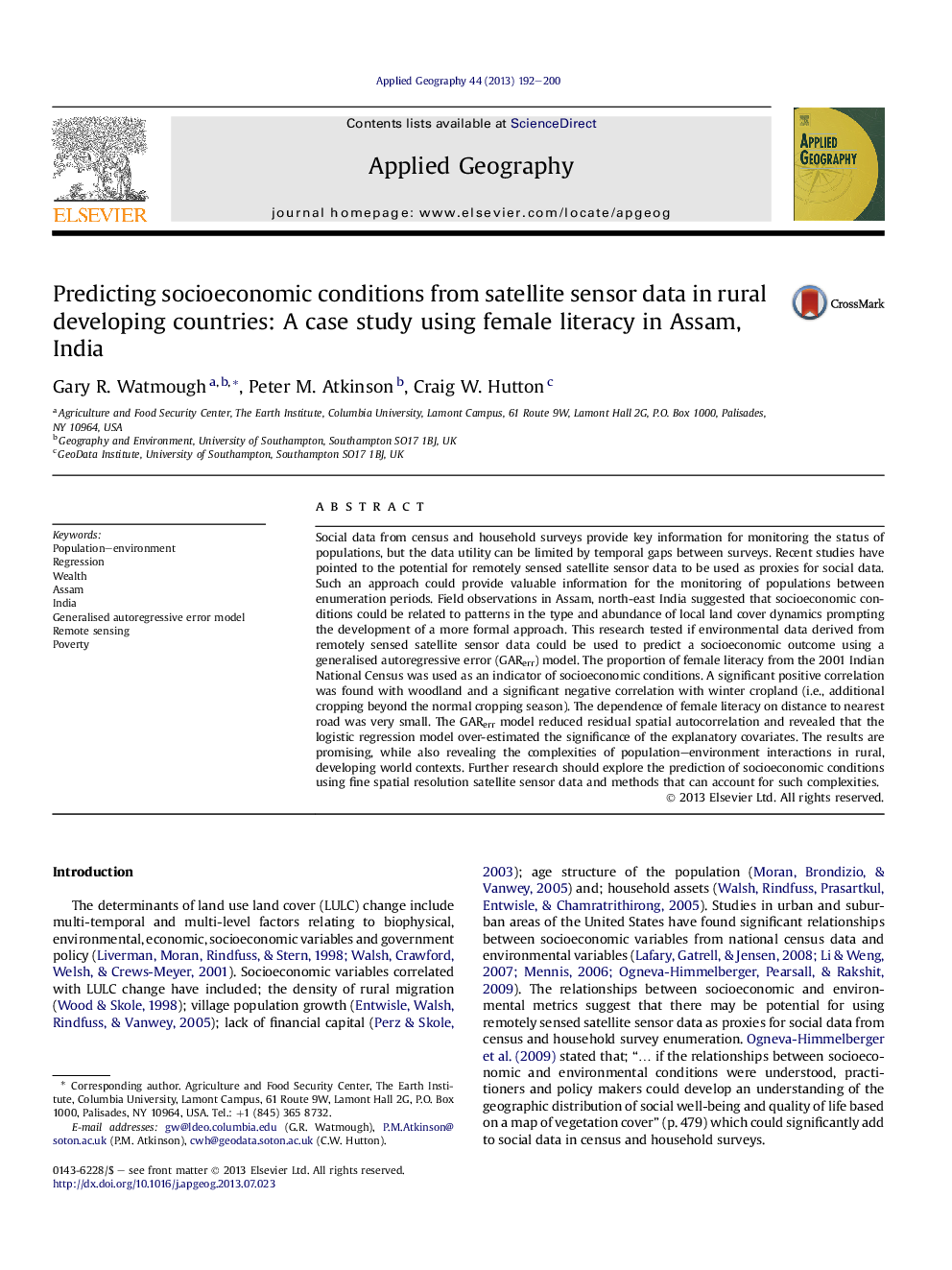| Article ID | Journal | Published Year | Pages | File Type |
|---|---|---|---|---|
| 83666 | Applied Geography | 2013 | 9 Pages |
•We tested if satellite derived environmental data could predict census outcomes.•Field studies indicated relations between socioeconomic conditions and land cover.•A significant positive correlation was found between female literacy and woodland.•A significant negative correlation was found between female literacy and winter crop.•Results are promising, but emphasise complex population–environment interactions.
Social data from census and household surveys provide key information for monitoring the status of populations, but the data utility can be limited by temporal gaps between surveys. Recent studies have pointed to the potential for remotely sensed satellite sensor data to be used as proxies for social data. Such an approach could provide valuable information for the monitoring of populations between enumeration periods. Field observations in Assam, north-east India suggested that socioeconomic conditions could be related to patterns in the type and abundance of local land cover dynamics prompting the development of a more formal approach. This research tested if environmental data derived from remotely sensed satellite sensor data could be used to predict a socioeconomic outcome using a generalised autoregressive error (GARerr) model. The proportion of female literacy from the 2001 Indian National Census was used as an indicator of socioeconomic conditions. A significant positive correlation was found with woodland and a significant negative correlation with winter cropland (i.e., additional cropping beyond the normal cropping season). The dependence of female literacy on distance to nearest road was very small. The GARerr model reduced residual spatial autocorrelation and revealed that the logistic regression model over-estimated the significance of the explanatory covariates. The results are promising, while also revealing the complexities of population–environment interactions in rural, developing world contexts. Further research should explore the prediction of socioeconomic conditions using fine spatial resolution satellite sensor data and methods that can account for such complexities.
